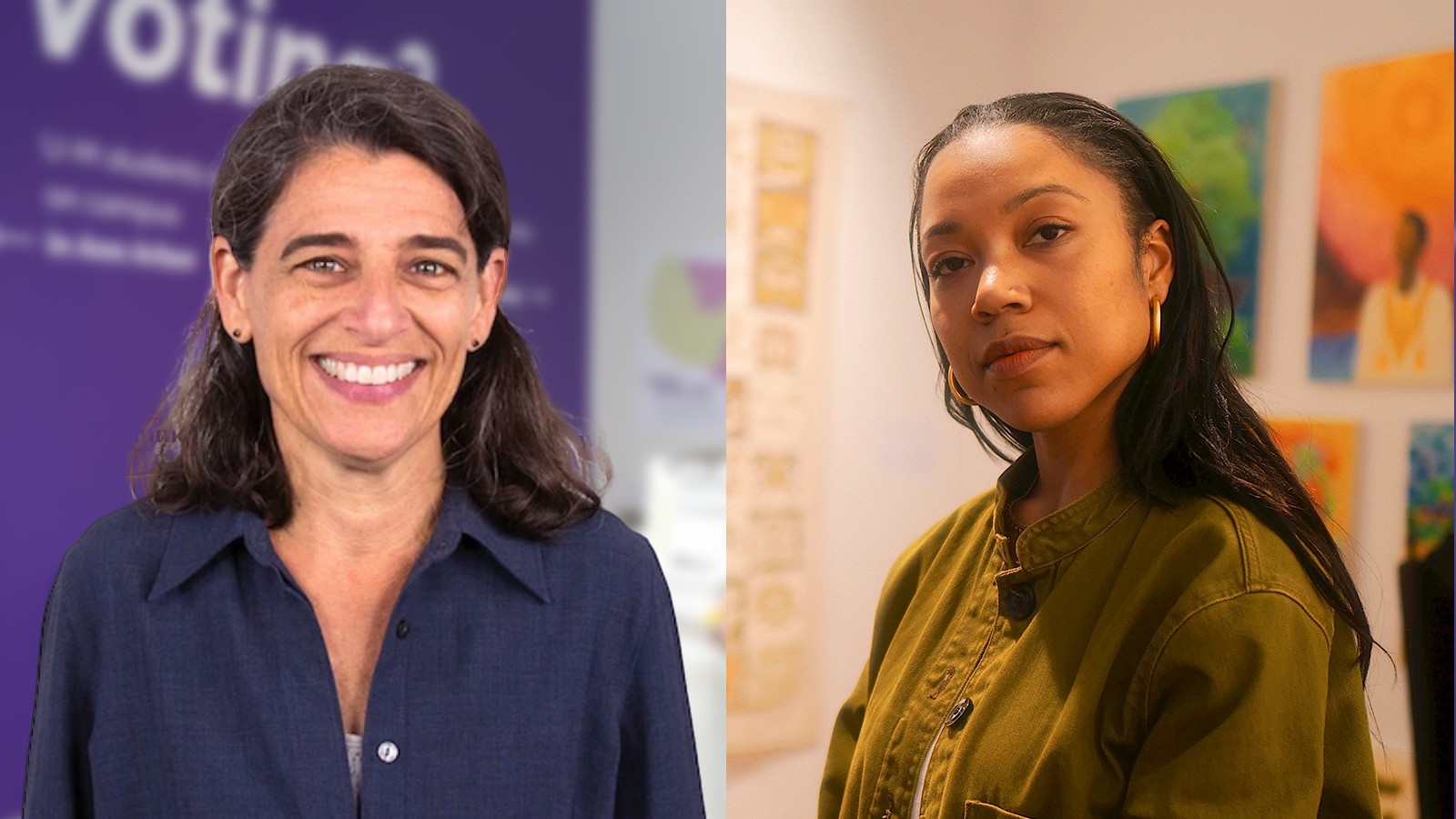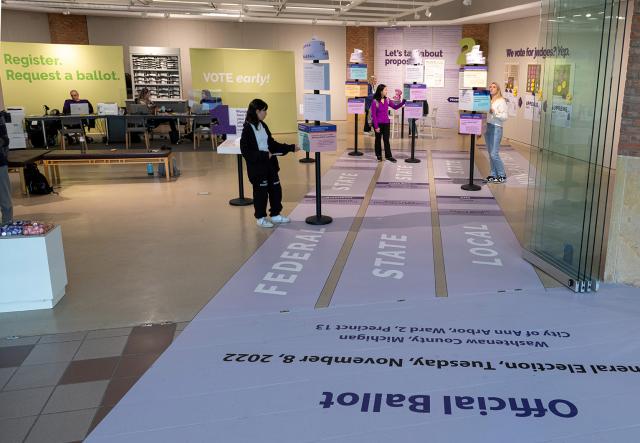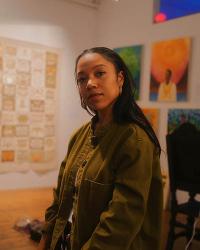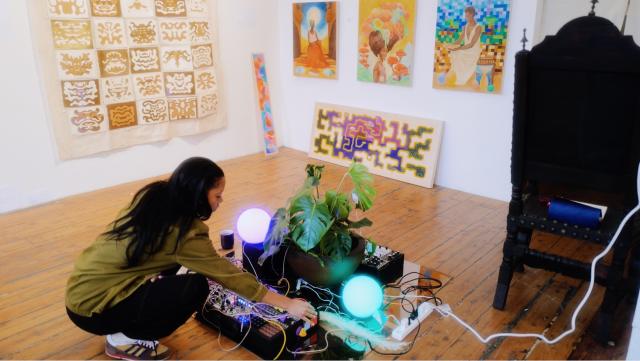Arts for All Welcomes Inaugural Artists-in-Residence
February 05, 2024

Hannah Smotrich and Ari Melenciano ’14 will focus on voting, AI, while at UMD this semester.
By Kelly Blake
Two visiting faculty members in the realms of design and art will teach and conduct research this semester to address questions about some of the most pressing issues of our time: the health of American democracy and the ethical and creative use of artificial intelligence (AI).
Hannah Smotrich, an associate professor of art and design at the University of Michigan, and Ari Melenciano ’14, an artist and creative technologist, are the first faculty members to hold residencies through the campuswide Arts for All initiative, which partners the arts with the sciences, technology and other disciplines to spark dialogue, understanding, problem solving and action. They will teach classes, present research and serve as representatives of Arts for All, further illustrating the importance of the arts at UMD and beyond.
“It is very special to have both Hannah and Ari serve as our inaugural designer and artist-in-residence this year,” said Craig Kier, Arts for All director and associate professor in the School of Music. “Both of them will no doubt create meaningful connections between multiple disciplines throughout the spring semester.”
Learn more about these two experts and their plans for the semester:
Smotrich is the co-founder of the Creative Campus Voting Project at the University of Michigan, an initiative that investigates how creative interventions—civic spaces, experiences and materials—can support student voters and increase participation.
At UMD, she is working alongside Professor of Architecture Ronit Eisenbach, who directs the creative placemaking minor, to jumpstart a similar initiative. Together they are teaching “Design and Democracy,” which brings together students with interests in graphic design, architecture and spatial design to collaborate with those from public policy and government and politics to research, design and propose ideas for interactive spaces, experiences and materials that educate and energize UMD student voters. The hope is that some of their ideas will be implemented on campus this fall, ahead of the November election.
“The stakes are high for our democracy in terms of folks participating,” Smotrich said about this election year. “Design can create a welcoming entry point for students. Design can communicate and present information in ways that allow people to receive it and process it.”
For instance, a 40-foot interactive “ballot wayfinder” installation developed at the University of Michigan includes a series of rotating cubes on poles that introduce students to key offices at the federal, state and local levels and the impact that the office could have on specific issue areas.
“Oftentimes for new voters it’s not apathy that is a barrier; there’s a fear that they don't have all the knowledge they need to do it properly,” Smotrich said. “We want to normalize that it's a little anxiety producing. And to reassure folks that there's pathways to learn and to grow to become a fully informed voter.”
Melenciano ’14, who received her undergraduate degree in studio art with a concentration in digital media, is a Brooklyn-based artist and technologist who previously worked at Google's Creative Lab and was a faculty member at New York University and Hunter College. An early adopter of AI in her creative practice, she uses it as a playground to probe questions of identity, create lost histories and dissect societal viewpoints.
At UMD, she is teaching “Creative Experiments with AI” through the immersive media design major in the Department of Art, guiding students to explore the use of artificial intelligence morally, artistically and philosophically in what she calls a “critically imaginative” way.
“She is one of a few artists looking at how AI can be used who are conceptually minded,” said Brandon Morse, professor and chair of the Department of Art, who invited Melenciano for the residency. “She explores notions of identity portrayed through AI algorithms and how they can be subverted.”
In a series called “computational anthropology,” she uses self-portraiture and archival photos as the foundation for new imagery created by inputting text-based prompts into an AI model to influence how her appearance is rendered and transformed, revealing the tool’s understanding of social, cultural and political nuance. “The strongest form of bias that came up was when I used the word ‘programmer’ to adjust my headshot, and it turned me into a white man,” she said.
Ultimately, Melenciano hopes her work in emerging AI models raises awareness among its developers and helps shape the technology to better reflect diverse cultures and forms of intelligence.
“Artists and creatives have a lot more power in influencing these tools than they probably even realize,” she said.
Photo information top to bottom: Ari Melenciano ’14 (left) and Hannah Smotrich (right); headshot of Smotrich; image of the "ballot wayfinder" installation; headshot of Melenciano; Melenciano working on a project. Photos courtesy of Smotrich and Melenciano.





